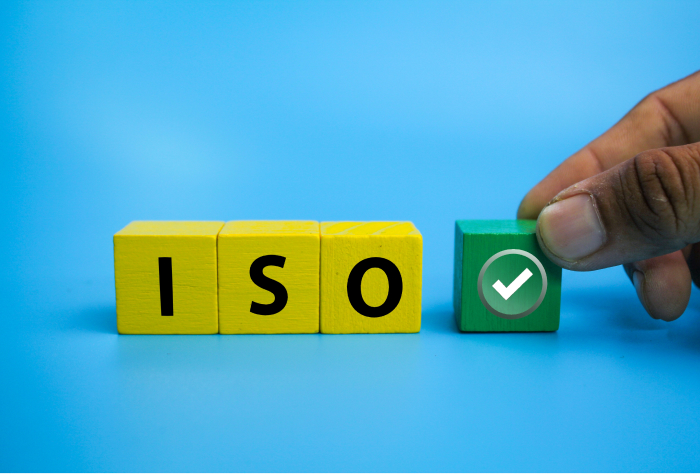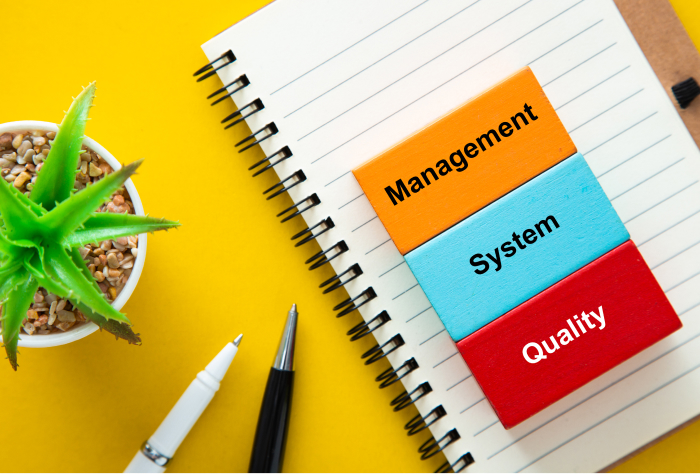INSPECTION TYPES :
1. PARTY : Our own system is our inspection. (Internal Inspection)
2. PARTY : Inspection of suppliers of Products / Services
3. PARTY : Being inspected by an independent certification body
Can be provided in accordance with international literature. Additionally, other inspection types such as process, product inspection, etc. can also be mentioned.
ISO 9000:2000 QUALITY MANAGEMENT SYSTEM INSPECTION :
It is defined as an independent and documented process to objectively evaluate the evidence obtained from the inspection and to determine the extent to which the inspection criteria (agreed upon) are met.
ANOTHER DEFINITION IS : It is part of a systematic quality management system conducted according to policy, manual, and established rules, consisting of PLANNING, IMPLEMENTATION, REPORTING, AND MONITORING phases, for examining objective evidence and verifying compliance with PRE-DETERMINED REQUIREMENTS or other conditions.
OBJECTIVE EVIDENCE : Data supporting the existence or correctness of something, obtained through observation, measurement, inspection, and other means, or (preferably) documented information.
INSPECTION OFFICER : Refers to persons conducting the inspection.
Additionally, the words Inspection or Audit can also be used instead of inspection.
GENERAL OVERVIEW OF INSPECTIONS (ESPECIALLY THIRD-PARTY CERTIFICATION INSPECTIONS) CONSISTS OF THE FOLLOWING PHASES :
Certification INSPECTION STAGES
- PREPARATION
- CONDUCTING THE INSPECTION
- REPORTING AND FOLLOW-UP ACTIVITIES IF NECESSARY
1. PREPARATION :
* Competence Inspection
* Planning the inspection
* Preparing the inspection program
* Updating question lists
COMPETENCE INSPECTION :
An inspection to determine whether the organization's documented Quality System complies with the relevant standard. This inspection is also called desk review or documentation review.
It is performed to verify whether documents meet the requirements of the standard. It is conducted to identify and clarify ambiguous or unclear points. Deficiencies are reported in writing to the relevant company, and corrective actions are requested.
INSPECTION PLANNING :
* Determining the purpose and scope of the inspection
* Selecting the person to manage the inspection (Team Leader – Lead Auditor)
* The team leader determines the team and task distribution
* Site visit
* Preparing the overall structure of the program
* Re-evaluating the inspection plan if necessary
* The competence inspection is prepared in detail, preferably after a preliminary visit.
* The team leader decides on the strategy with the team.
QUESTION LISTS :
* Prepared before the inspection for use in the inspection aimed at a specific target
* Serves as a reminder.
* Short and concise
* Can be a general-purpose question list or separate for each site.
* Prepared by inspection personnel and/or trained personnel of the company.
* Covers all relevant topics.
2. CONDUCTING THE INSPECTION :
* Opening Meeting
* Performing the inspection
* Reviewing the inspector’s findings
KYS ELEMENTS TO BE INSPECTED :
* PERSONNEL
* PROCESSES
* MATERIAL
* EQUIPMENT AND MACHINES
* DOCUMENTS
OPENING MEETING :
* Introduction
* Purpose and scope of the inspection
* Definition of non-conformity
* Providing information about the inspection program and selecting a guide
* Explanatory information
* Reporting methods
* Confidentiality
* Restrictions (rules to be followed)
INSPECTION :
* Direct contact is made with the person responsible for the activity to be inspected
* Activities are observed
* A sufficient number of samples are selected for review
* The aim is not necessarily to find a problem, but to seek compliance with the relevant management system
* Managers in departments and, if necessary, other employees are consulted
* If no non-conformities are found, the program continues
* If a problem is suspected, an in-depth investigation can be conducted
* The subject is inspected with the relevant person
* Observations and findings are recorded
* Efforts are made to obtain objective evidence
* Clear and understandable questions are asked
* Documents, records, and question lists are utilized
* Notes are taken
* Events are observed
NON-CONFORMITY :
* Failure to meet a condition
* Special conditions
o Contract conditions
o Quality Standard
o Quality Manual
o Procedures
o Legal requirements
* Documentation does not comply with the System standard (Competence)
* Implementation, Documentation, and reference do not meet the standard requirements (Implementation)
CLOSING MEETING :
This is the results meeting of the inspection process, where findings and results related to the inspection are formally presented by the team.
Agenda:
* Participants – Thanks
* Purpose/Scope – Reporting
* Sampling presentation system
* Agreement – Summary
* Clarifications – Observations
Purpose : To discuss non-conformities and observations, eliminating misunderstandings
The inspector, guide, and, if necessary, other managers participate.
* Lasts about 20-25 minutes
* A brief thank-you speech is given.
* Non-conformities are explained with objective evidence.
* The inspection result is announced.
* Positive findings are expressed.
Verification of corrective actions taken
Ensuring short- and long-term effectiveness
Recording follow-up process details
Closing the Non-conformity Forms follow-up section
3. REPORTING AND FOLLOW-UP ACTIVITIES
The inspection team prepares reports and appendices defined for the relevant management system. If there are non-conformities, they are included in the report set. Corrective actions are requested from the company for these non-conformities. Once corrective actions are completed, the implementation and effectiveness of these actions are monitored.










